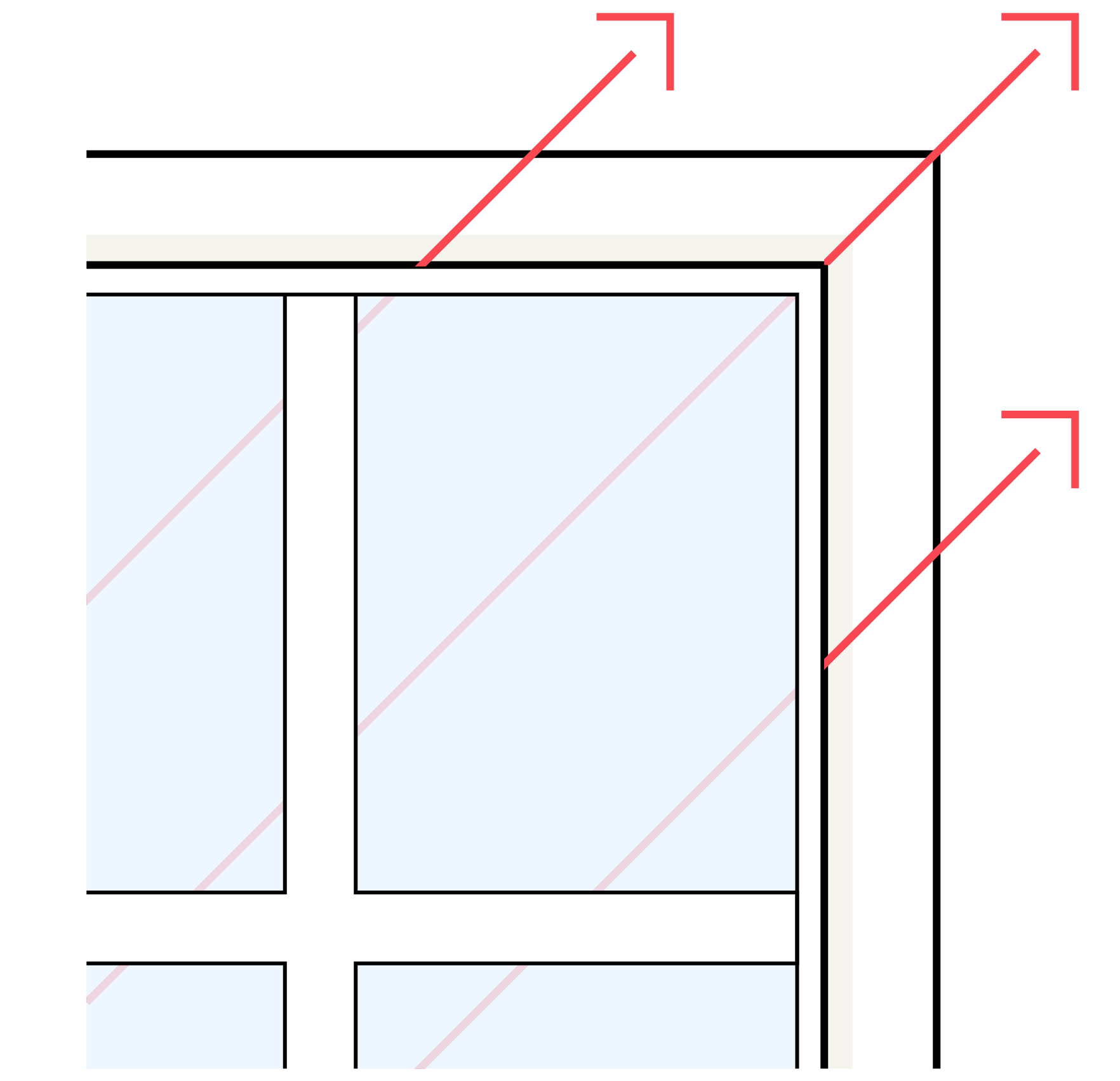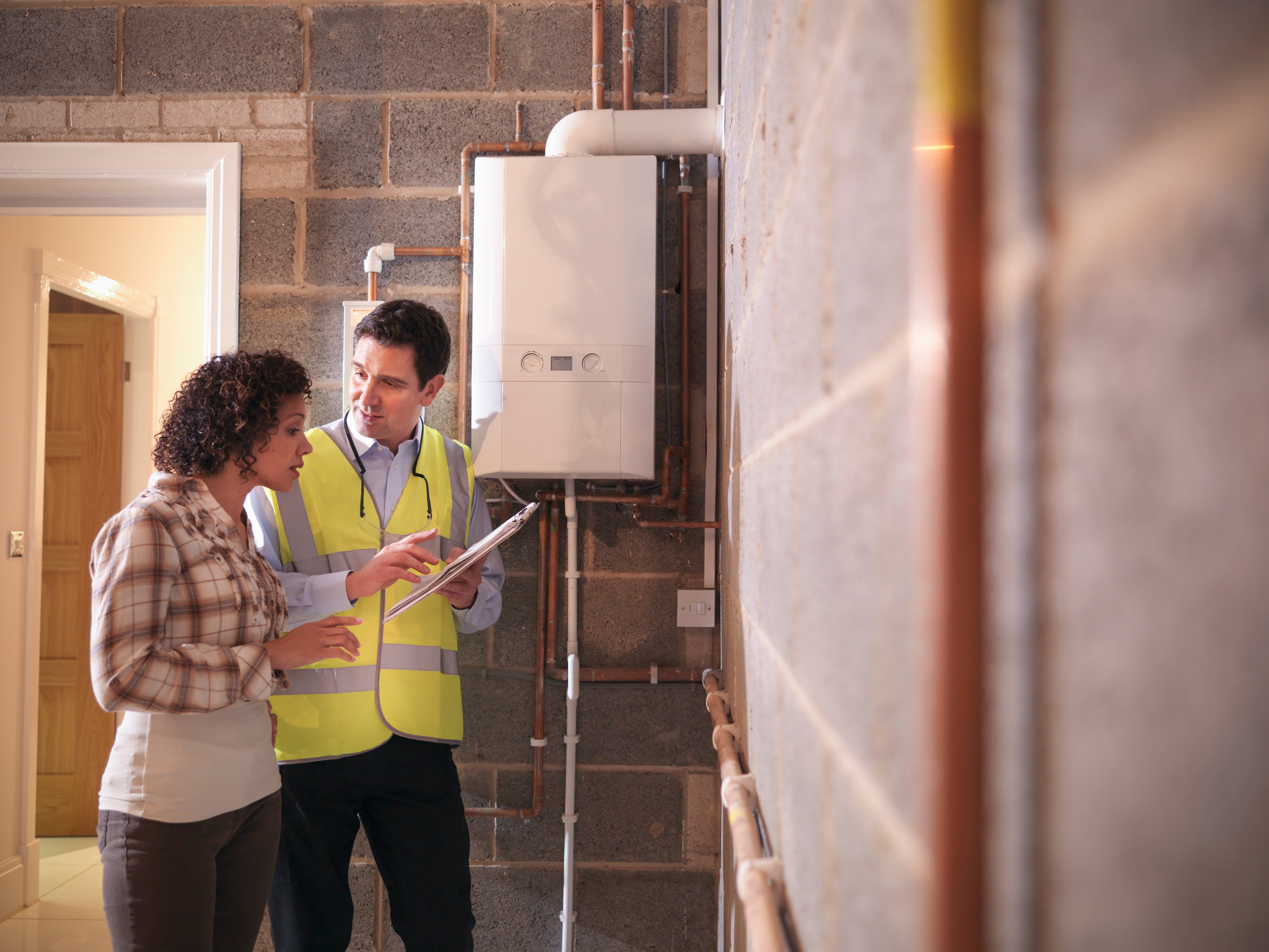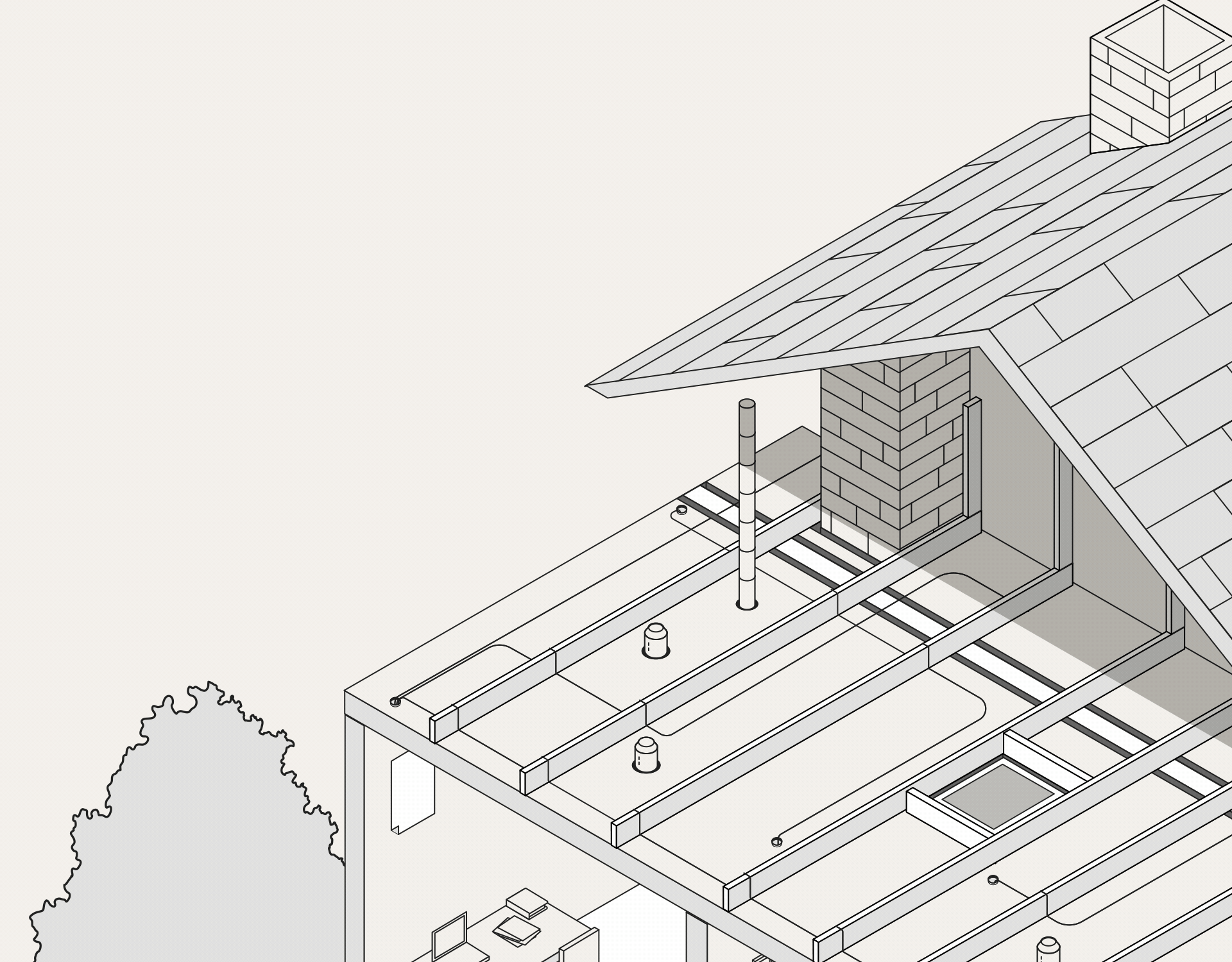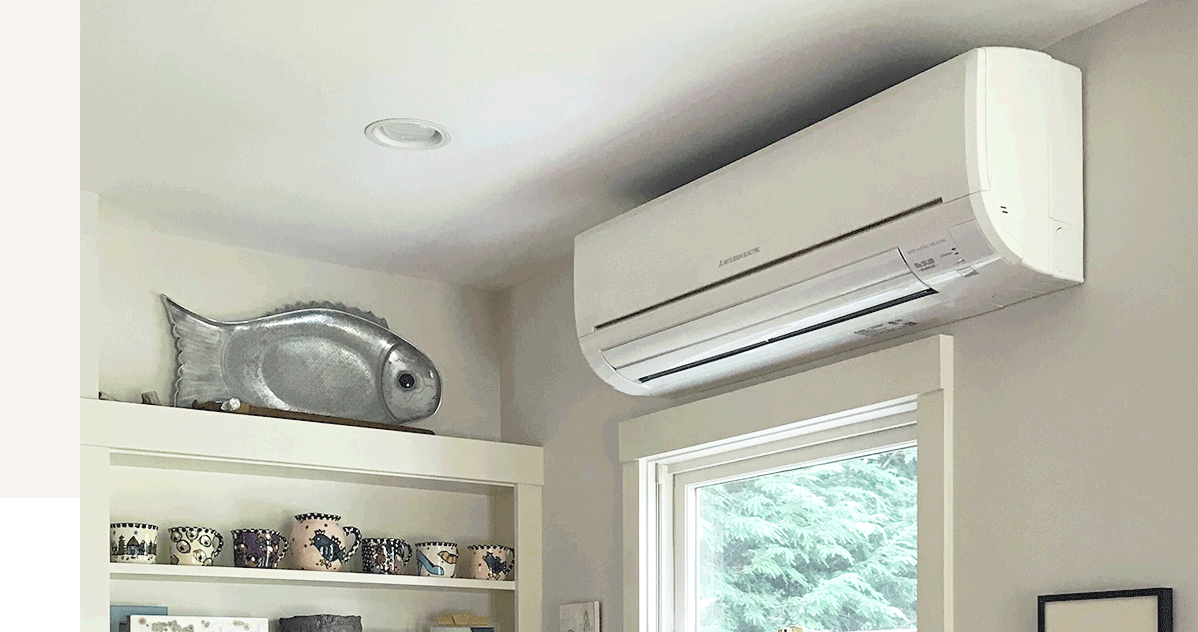Old houses have a reputation, right? They break. They’re drafty. They can be expensive to maintain and very expensive to heat. But that doesn’t have to be your house’s story.
Heating options for existing and older houses have improved, and there are plenty of modern, efficient HVAC options to replace your worn-out heating system.
And if you’re not quite ready to finance a new heating system? Fear not: There are still smart ways to reduce the cost of heating your older home.
Here’s what we’ll cover in this article:
- Common challenges heating a large old house efficiently
- 3 steps to efficiently heat an older home
- Heating options for old houses
- How air sealing your home and insulation upgrades can stop drafts permanently
- Why heat pumps are the best way to heat an old house
Basically, in this guide, you’ll learn how to finally get warm in your old house and end the winter thermostat wars.
(Plus, you’ll get all the information you need about the best way to heat a home, no matter what year your house was built.)
Ready to stop watching TV in a parka? Let’s dive in.
How to heat a large old house: Common challenges with heating older houses
The price of heating your house varies quite a bit and depends on where you live, what type of fuel you use, and what energy costs in your area, but heating—in general—is expensive.
According to the Energy Information Administration, heating and cooling your home typically makes up about 51% of your utility bill (1). That’s quite a lot.
Not to throw fuel on the fire, but energy costs have risen in the last couple years, too, which makes your heating bills even more pricey. (And if you own a drafty old house, you know that your winter bills can really skyrocket.)
Heating and cooling your home typically makes up about 51% of your utility bill.
EIA
(Read Why is natural gas so expensive? or Why is propane so expensive? to learn more.)
But should heating an old house cost so much in the first place? In our experience, we’ve seen that an older home can become just as efficient as a newer home with the right upgrades.
Older homes have a few issues that cause this high heating bill problem, but we’ll start with the decoy first: windows.
If your windows are a big part of the problem, it doesn’t necessarily mean you have to replace them.

Old, drafty windows
Most people think their old windows are to blame for the drafts in their home, and that’s understandable.
Window companies spend a lot of money convincing homeowners that their windows are the source of all their climate control issues.
But—surprise!—windows usually aren’t the primary culprit. Actually, your house could be cold for plenty of other reasons (and you’ve likely personally encountered them if you own an older home).
Something else to note, too: If your windows are a big part of the problem, it doesn’t necessarily mean you have to replace them. In fact, you probably don’t have to!
In many cases, a better option is to air seal your windows with a few different techniques. (You might be able to get this done with an energy-savings guarantee if you qualify.)
(Read Do window insulation kits work? or Do thermal curtains work? to learn more.)
Gaps in your home’s construction
Old houses are full of holes, gaps, and crevices that cold air can slip through. These aren’t gaps that are easy to see, but they’re there nevertheless—and they can make your house feel absolutely freezing inside.
That’s why old houses are drafty—the building has had time to shift and deteriorate (even in the best old home). Cold air can come in through the attic, holes in the walls, the exterior walls, and the windows.
And if you have an untreated fireplace with a chimney, don’t be surprised to find that you get cold sitting by it—it’s a magnet for cold air.
While the cold air is getting in, these same gaps and air leaks cause the hot air your central heating system worked hard to produce (and that you paid for) to escape through the top of your attic.
Watch this quick video for a simple explanation of how to keep the outside air out:
Learn how to find air leaks in your house.
Old insulation
Another common issue is insulation.
In older homes, insulation is often old or of low quality, and in some cases, it might even be non-existent—especially proper attic insulation for hidden attics. American energy-efficiency practices didn’t find their way into residential building codes until the early to mid 2000s—and insulation recommendations have changed over time, so it’s likely your house is due for an upgrade.
If you’re not sure what your insulation situation looks like, you can get a professional to check it out, get a home energy audit, or scan How long does insulation last to learn the signs of deteriorating insulation.
Here’s the truth, though: You can make energy upgrades like adding a smart programmable thermostat, switching over to energy-saving appliances, or blocking door drafts, but if your insulation is deteriorating—well—that’s like putting lipstick on a pig. You’re still going to have an uncomfortable house that’s hard to heat.
Sealed did a great job with insulating my home. The drafts are gone which makes the house more comfortable and warmer.
John B., Sealed customer
An underperforming heating system
The elephant in the room is that, sometimes, your heating system just isn’t up to the challenge of warming your entire home.
After all, old homes were designed for old heating systems. They’re often heated with boilers and radiators or aging forced-air systems that haven’t been serviced correctly and use tons of energy—only to make a marginal difference in how your home feels.
These older heating systems are also powered by fossil fuels—energy sources that add to outdoor pollution, are bad for your indoor home air quality, and increase your energy bill, depending on the home heating system type you use and costs in your area.

Here are 3 steps to efficiently heat an older home
The truth about heating a large old house is that it’s going to take a little bit of work—and it will likely take some financial investment.
There’s a chance you’ll need to upgrade your insulation (or even your heating system) in order to fully resolve the problem.
The good news? You have options—probably more than you think.
In fact, it’s almost always a good idea to see if you can resolve the problem by trapping in the heat you have with a weatherization retrofit. (In many cases, this can make a significant difference in how your home feels.)
And there’s even more good news: In some places, you may be able to warm up your older home without paying any upfront costs.
Next, take a look at your three most important steps to get a warmer home:
1. Stop cold drafts in an older home
On the surface, this option is fairly straightforward: Find where the holes are, and then plug them with something so that cold air can’t get in (and warm air can’t get out).
There are two big strategies to do this—one is temporary and the other is permanent.
First, the DIY option.
To temporarily inhibit cold drafts, you’ll need to identify areas where cold air is getting in. Likely candidates include the edges of doors, windows, and your HVAC vents.
Then, you’ll need to buy, borrow, or rig-up appropriate “air sealers” for each of those issues. Search around online and you’ll find plenty of products, such as draft stoppers for the bottoms of doors, magnetic vent covers, and plastic window sealers.
Air sealing is so effective that the EPA estimates that air sealing alone can save you up to 15% on your monthly heating bill.
ENERGY STAR
Another common area for cold air to get in is through an unused, unsealed fireplace—these are basically super-highways for cold air.
To temporarily solve this problem, you can try installing a chimney balloon, a fireplace blanket, or a chimney cap. Or, if you never use your fireplace, you might even permanently seal it off.
There are plenty of possible solutions here, but no matter how you deploy them, there’s still an underlying issue—draft stoppers don’t solve the real problem.
So let’s talk about a solution that does.
Permanently stop drafts (and minimize heat loss) through air sealing your home
Here’s an inconvenient truth: If your old house is too cold in the winter or too warm in the summer, you probably shouldn’t blame your door jambs and windows.
Instead, there’s a good chance the culprit is your attic—more particularly, the way your attics are insulated (or not insulated) as well as all the gaps and crevices in your roof and ceilings.
Why is your attic the likely culprit? Well—channeling our third-grade teachers here—heat rises. And when the heat energy in your old house rises, it’s supposed to be kept inside.
But if your attics aren’t well-insulated—and if your old house hasn’t been sealed by a professional—the heat energy simply escapes through the roof. When it does, it creates a giant vacuum effect, called the stack effect, which pulls in cold air through all the other gaps in your home.
(If you’ve ever wondered why cold air seems to stream into your home through any available crevice, now you know—it’s literally being sucked in.)

In winter, about a quarter of the average home’s heat is lost through the roof. And that percentage can go even higher for an older home, because of the way old homes were constructed.
And that’s why a major step toward keeping your old house warm is air sealing.
If you’ve never heard of it, a quick explanation is, it’s the process of finding and sealing off all the little holes in your home which let in the cold air.
Some of those holes will be in your doors and windows, sure, but many of them will be in your attic, your roof, your basement, and your crawlspaces—all the places you may not have checked (and, frankly, probably don’t feel like inspecting, because they aren’t fun to get to).
Air sealing is a good idea for just about every home, and you can learn all about it in our Complete Guide to Air Sealing.
However, although air sealing is effective, it can be difficult to implement it yourself correctly.
If you’re not trained in this specialized work, you could risk over-sealing your home or not sealing it properly at all, wasting materials, time, and your own elbow grease!
In short?
If you’ve got a ton of cold air in your home, there’s a good chance that air sealing your foundation, your attic, and the rest of your home will go a long way toward making you feel a lot more comfortable.
Everything went very smoothly, and my house feels cozy… no more cold and drafty spots. I strongly recommend using [Sealed].
Jess L., Sealed customer
2. Add insulation to an older home
If you’ve got an old house—or simply one built before the year 2000—most (or all) of the insulation you have is probably outdated or of poor quality.
Insulation technology has progressed a lot in the last few decades, and upgrading yours could make a huge difference in your overall comfort level.
And even if your insulation is decent, you may need to check to see if it is, indeed, everywhere in your home. A lot of older houses and historic homes have unfinished and uninsulated attics that can let a whole bunch of cold air in if left unaddressed.
This is also exactly why your upstairs is so hot in the summer. In the summertime, heat radiates from poorly insulated attics into your house.
(Read How to Cool the Upstairs of a 2 Story Home to learn more about keeping your top floor cool.)
We’re talking a lot about older homes here, but these insulation issues can happen in new construction homes, too (just ask this writer how they know).
Areas of your home that might need additional insulation
The best way to determine where your home might need additional insulation is by going through an energy audit—a systematic process for determining how and where your house is losing its heat energy.
You can attempt to do an energy audit yourself—some people do—but we’ll be honest: This is a big ask if you’re not an energy expert.
But scheduling a professional energy audit is simple and can be completed at home or through a remote evaluation with provided photos.
At Sealed, we find our customers are fans of the remote option, receiving an expert determination on their own schedule—without making additional appointments to meet someone in their home.
An energy audit is often available for free from your local utility company, but if it isn’t, you can usually get one for a reasonable price from a specialist in your area. (For what it’s worth, if you go with Sealed, it’ll be included in your overall package—no need to do anything extra.)
(Read How does insulation save energy? to learn the science behind the upgrades.)
Create a thermal boundary by insulating your attic
This is a big one. As you’ve seen, your attic could be one of the biggest reasons your house feels freezing, so creating a thermal boundary with insulation can go a long way to making your space comfier.

With a properly insulated and sealed attic creating a sufficient thermal boundary, heating an old house becomes less of a challenge and reduces energy waste.
The materials used in your basement and foundation are excellent bridges—thermal bridges, if we’re getting technical—for cold to seep into your home.
Insulating your basement walls properly can mitigate this issue, as well as provide some other benefits, such as some protection against moisture intrusion.
Many people think they need to replace their windows, but, often, just making sure they’re well insulated and air sealed is all that’s needed. (Really!)
3. Choose the best heating system for an old house
Okay. Let’s say you’ve sealed and insulated your home (or at least plugged some of the holes)—and the temperature still isn’t what it needs to be. Or maybe it’s cold in one room and warm in another.
It’s time to move on to the next strategy: a new heating system. Don’t panic, though. We know it’s a big investment, but it’ll be worth it, it’ll add to the value of your home, and you might even be able to get your new high-efficiency heating system with flexible payment options and an energy-savings guarantee.
A quick word of warning before we get into the options: Don’t try to size and purchase a heating system on your own.
When you’re considering heating options to heat a large old house, it’s vital that you work with a trusted HVAC contractor or home performance pro. (You don’t want to make a significant investment and find out later that you didn’t solve the problem.)
You could cut up to 50% of your energy use when getting high-performance insulation, professional air sealing, and heat pump HVAC upgrades with Sealed. Learn how.
Ways to heat an old house
First, a quick note about your heating upgrade strategy. Many folks assume that just purchasing the newest version of their current heating system will be the most efficient use of their upgrade dollars.
But times have changed, heating technology has improved significantly, and if you want to get the biggest bang for the buck, you should seriously consider newer, more energy-efficient heating options.
Let’s talk through the main heating options for old houses:
- Heat pumps (our favorite and the most efficient option)
- Boilers and radiators
- Electric baseboard heating
- Radiant, localized heating (like a space heater)
- Furnaces
- Radiant floor heating
Heat pumps—air-source and geothermal heating pumps
We’ll start with the best. In most cases, heat pumps are the most efficient way to heat your older home.
These super-powerful HVAC systems work by transferring heat from outside your home to the inside of your home and they also double as an air conditioning system in the warmer months—a win-win.
(Learn more about heat pumps in The Ultimate Guide to Heat Pumps or read Installing AC in an old house to get the scoop.)
Boilers and radiators
These heat water until it turns to steam. They run on electricity, gas, or oil, and are very common in older, historic homes. (Unfortunately—and you might know this from personal experience—they’re not very efficient.)
Electric baseboard heating
Also known as baseboard heaters or electric resistance heating, these units can be individually installed in rooms that need extra heat. They’re not a great whole-house solution, though.
Radiant, localized heating
The quick-and-dirty solution: Just buy a portable heater and set it up in the room that’s cold. While this can work as a temporary fix, it’s one of the least-effective and least-efficient options.
Furnaces
The most common type of heating in the US. Furnaces work by generating heat on burners inside a cabinet, and they can run on electricity, natural gas, or oil.
Radiant floor heating
This kind of system spreads heat through a film or mat beneath your floor (or, sometimes, through heated water in pipes). If your old house doesn’t already have this, it can be an enormously intrusive installation process.
For a more in-depth—and really helpful!—guide to all your home heating options, tap here.
Converting a gas- or oil-powered heater to electricity
Before we move on, there’s one more option to talk about—and it’s one you may not have even considered: Converting from a natural gas furnace or oil-powered heating system into an electricity-powered system.
Many older homes have oil furnaces or boilers, and if you have one, you might have gotten used to regular heating oil or propane deliveries (and very short, lukewarm showers).
But it doesn’t have to be this way. In many cases, your entire home can be converted to run on electricity, a much cleaner, safer, and more energy-efficient way of keeping warm.
Converting from oil to electric can make your home far more valuable to buyers (because they don’t want your old oil-based system any more than you do).
Converting to electricity is a much cleaner, safer, and more energy-efficient way of keeping warm.
Finally, new electric air-source heat pumps are much more efficient than old fossil-fuel technology or electric furnaces of the past, which means you’re going to get more heat for the energy you purchase if you convert to a heat pump.

Why electric heat pumps are a leading choice in heating options for old houses
Full disclosure: We’re big fans of heat pumps in general, but to be fair—we’ve got good reasons.
Heat pumps are the most efficient way to heat just about any enclosed space; they’re quiet and comfortable, they can lower your heating bill, and they double as an air conditioning system in the summer.
When it comes to old homes, though, heat pumps shine even brighter. Here’s why:
- They don’t require an invasive installation—and some models don’t even require ductwork.
- They serve a dual purpose as an air conditioner and a heater. Having a cooling system and a heating system in one makes annual maintenance easier.
- They offer room-by-room temperature control if you choose a ductless mini-split option. Learn how to camouflage a mini-split unit here.
- They’ve been proven to outperform fossil-fuel systems and cost less to own, run, and maintain over their lifespan (2, 3).
- They use modern technology with your family’s safety in mind. (No risks of off-gassing CO2 and carbon monoxide.) Read about natural gas safety to learn more.
- They’re so comfortable, your old house just might feel new again.
- There are plenty of heat pump tax credits and rebates to help make the switch.
- Sealed’s home energy retrofit program makes it easy.
Put simply: Heat pumps feel great. They provide beautiful climate control, they don’t smell, and they provide a constant circulation of fresh, filtered air.
Get a warmer, more comfortable home with an energy-savings guarantee if you qualify
Finally, depending on your location, you may be able to get insulation and air-sealing upgrades—or even a super-efficient heat pump system installation—at $0 upfront if you qualify.
In fact, qualifying homeowners can get needed energy-efficiency upgrades without draining their bank account—and with an energy-savings guarantee. See if your house qualifies.
We don’t do cookie-cutter solutions either. Every house is different, and we create a custom-built plan to make your house feel amazing year round… and cut your energy waste.